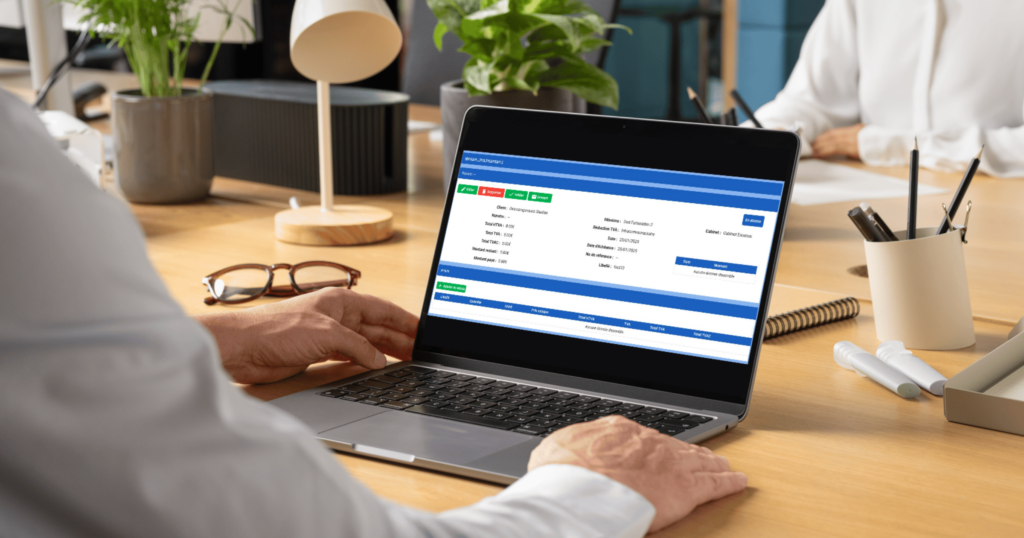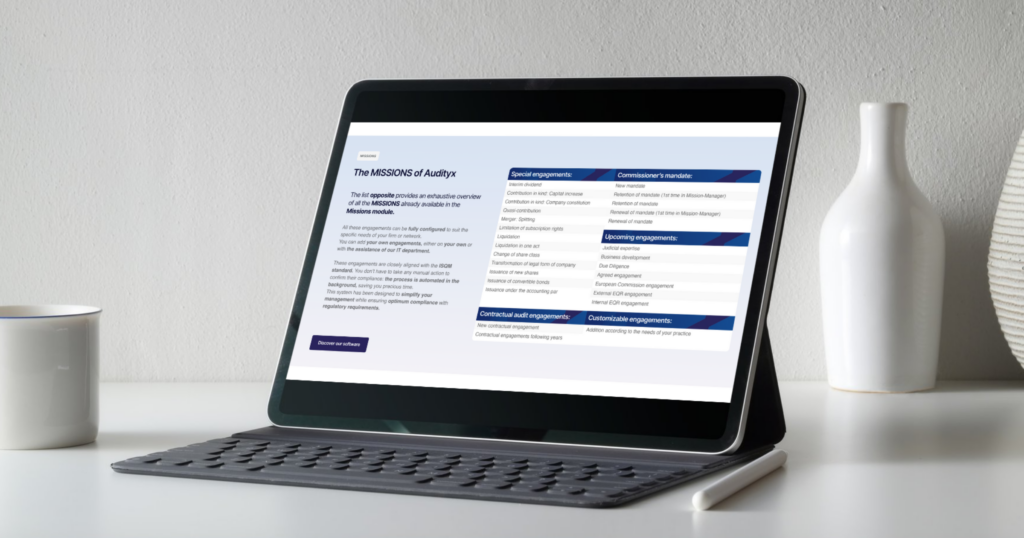In an environment where compliance, efficiency, and mission management are crucial, statutory auditors must rely on key performance indicators (KPIs) to steer their activity.
Rigorous tracking not only improves mission management but also enhances productivity, compliance with ISQM standards, and overall firm profitability.
So, which essential KPIs should you be monitoring to ensure optimal performance?
Here’s a comprehensive guide to structure your performance management approach.
1. Rate of Missions Completed on Time
Meeting deadlines is a key metric in audit firms.
A low on-time completion rate can reveal issues such as poor prioritization, inadequate resource allocation, or lack of visibility on mission progress.
💡 How to improve it:
- Real-time tracking of tasks and deadlines.
- Use of a mission management tool to centralize information.
- Optimized resource allocation based on workload.
2. Number of Unbilled Hours
Hours worked but not billed represent a significant financial loss.
Accurate timesheet tracking helps evaluate team efficiency and ensures that each mission is properly accounted for.
💡 How to improve it:
- Digitize timesheet tracking to avoid omissions.
- Automate time logging related to missions.
- Analyze discrepancies between estimated and actual hours to adjust billing.
3. ISQM Compliance Rate
Compliance with ISQM 1 and 2 standards is a critical concern for statutory audit firm.
A low compliance rate may lead to regulatory risks and penalties, as well as a loss of credibility.
💡 How to improve it:
- Automate document management to ensure full traceability.
- Implement quality control procedures tailored to your practice.
- Use a mission management platform with built-in real-time compliance checks.
4. Average Time to Close a Mission
An audit or review takes time—but how much, exactly? Measuring the average time to close a mission helps better manage workloads and identify bottlenecks.
💡 How to improve it:
- Review the longest-running missions to understand obstacles.
- Optimize task distribution and team collaboration.
- Automate processes and reduce delays where possible.
5. Anomalies Detected via Key Findings
A high number of errors may indicate a lack of rigor in the review process. Regular analysis of anomalies allows for the implementation of corrective actions to ensure the quality of deliverables.
💡 How to improve it:
- Use analytical dashboards to detect anomalies early.
- Raise team awareness on the importance of review quality.
6. Digital Tool Adoption Rate
Audit firms are investing in digital tools to automate and streamline their workflows.
But are these tools actually being used by the teams?
A low adoption rate can hinder both profitability and productivity.
💡 How to improve it:
- Provide regular training to support tool adoption.
- Choose a solution that is intuitive and user-friendly to reduce resistance.
- Measure the tools’ impact on time savings and productivity gains.
Conclusion: Managing Your Practice with the Right KPIs
Statutory auditors must adopt a data-driven approach to optimize mission management, compliance, and profitability.
With tools like Audityx, it becomes possible to track several KPIs in real time, optimize resource allocation, and ensure smoother, more efficient mission management.
And you—what KPIs do you track daily to improve your firm’s performance?
#ISQM #StatutoryAuditors #MissionManagement #Productivity #Digitalization #Compliance









